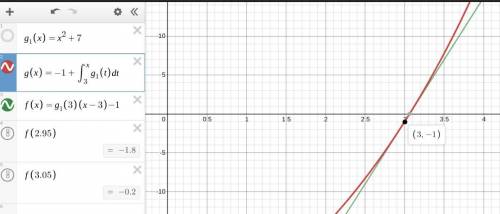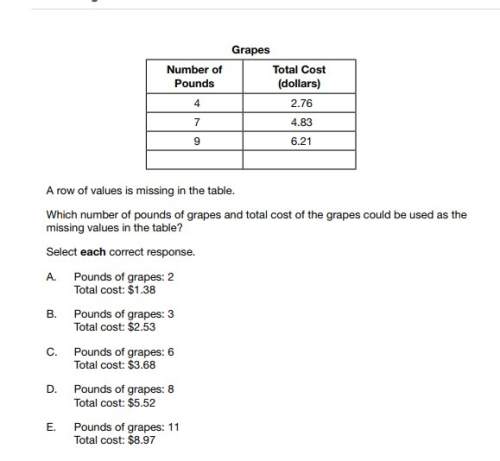
Mathematics, 15.07.2020 03:01 19thomasar
Suppose that we don't have a formula for g(x) but we know that g(3) = −1 and g'(x) = x2 + 7 for all x.
(a) Use a linear approximation to estimate g(2.95) and g(3.05).
g(2.95) =
g(3.05) =
(b) Are your estimates in part (a) too large or too small? Explain.
A) The slopes of the tangent lines are positive and the tangents are getting steeper, so the tangent lines lie below the curve. Thus, the estimates are too small.
B) The slopes of the tangent lines are positive but the tangents are becoming less steep, so the tangent lines lie below the curve. Thus, the estimates are too small.
C) The slopes of the tangent lines are positive and the tangents are getting steeper, so the tangent lines lie above the curve. Thus, the estimates are too large.
D) The slopes of the tangent lines are positive but the tangents are becoming less steep, so the tangent lines lie above the curve. Thus, the estimates are too large.

Answers: 3
Another question on Mathematics


Mathematics, 21.06.2019 19:00
You earn a 12% commission for every car you sell. how much is your commission if you sell a $23,000 car?
Answers: 1

Mathematics, 21.06.2019 19:30
Write a function rule for the table. hours worked pay 2 $16.00 4 $32.00 6 $48.00 8 $64.00 p = 16h p = 8.00h p = h + 16 h = 8.00p
Answers: 1

Mathematics, 21.06.2019 22:30
If a flying disk is 139 meters in the air and travels at an average of 13 m/s how long is it in the air
Answers: 2
You know the right answer?
Suppose that we don't have a formula for g(x) but we know that g(3) = −1 and g'(x) = x2 + 7 for all...
Questions









Biology, 09.08.2019 02:30








Biology, 09.08.2019 02:30








